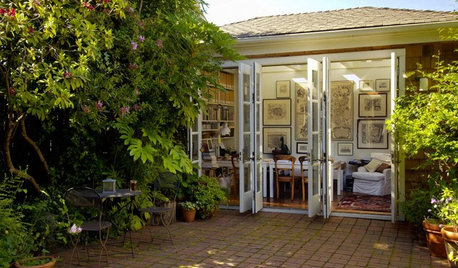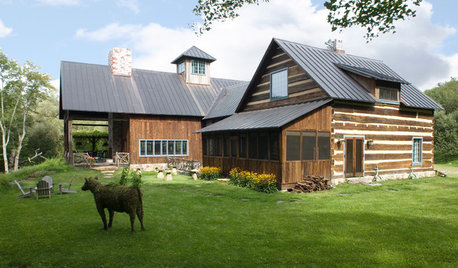Do I need to segregate my varieties?
bfreeman_sunset20
17 years ago
Related Stories

GARDENING GUIDES6 New Plant Varieties That Beat Out Their Parents
With better resistance and fewer demands, these garden beauties are worth a spot on your wish list
Full Story
LANDSCAPE DESIGNGarden Design Essentials: Unity and Variety
Between boredom and chaos lies the perfect balance. See how two design principles create landscapes as fascinating as they are harmonious
Full Story
FUN HOUZZEverything I Need to Know About Decorating I Learned from Downton Abbey
Mind your manors with these 10 decorating tips from the PBS series, returning on January 5
Full Story
LIFEYou Said It: ‘I’m Never Leaving’ and More Houzz Quotables
Design advice, inspiration and observations that struck a chord this week
Full Story
GARDENING GUIDESHow I Learned to Be an Imperfect Gardener
Letting go can lead to a deeper level of gardening and a richer relationship with the landscape. Here's how one nature lover did it
Full Story
LIFEThe Polite House: Do I Have to Display Decor Given to Me as a Gift?
Etiquette columnist Lizzie Post tackles the challenge of accepting and displaying home decor gifts from frequent visitors
Full Story
WINTER GARDENING6 Reasons I’m Not Looking Forward to Spring
Not kicking up your heels anticipating rushes of spring color and garden catalogs? You’re not alone
Full Story
EXTERIORSHelp! What Color Should I Paint My House Exterior?
Real homeowners get real help in choosing paint palettes. Bonus: 3 tips for everyone on picking exterior colors
Full Story
MATERIALSPro Panel: ‘The Material I Love to Work With Most’
7 experts weigh in on their favorite materials for walls, flooring, siding and counters
Full StoryMore Discussions







remy_gw
Weed
Related Professionals
70037 Landscape Architects & Landscape Designers · Simi Valley Landscape Architects & Landscape Designers · Brooklyn Center Landscape Architects & Landscape Designers · Anderson Landscape Contractors · Waterbury Landscape Contractors · Brookside Landscape Contractors · Bloomington Landscape Contractors · Canton Landscape Contractors · Hampton Bays Landscape Contractors · Lebanon Landscape Contractors · Lewisville Landscape Contractors · Palos Verdes Estates Landscape Contractors · Teaneck Landscape Contractors · St. Louis Roofing & Gutters · Summit Roofing & Gutterszeedman Zone 5 Wisconsin
sqftgarden_in_wnc
zeedman Zone 5 Wisconsin
zeedman Zone 5 Wisconsin